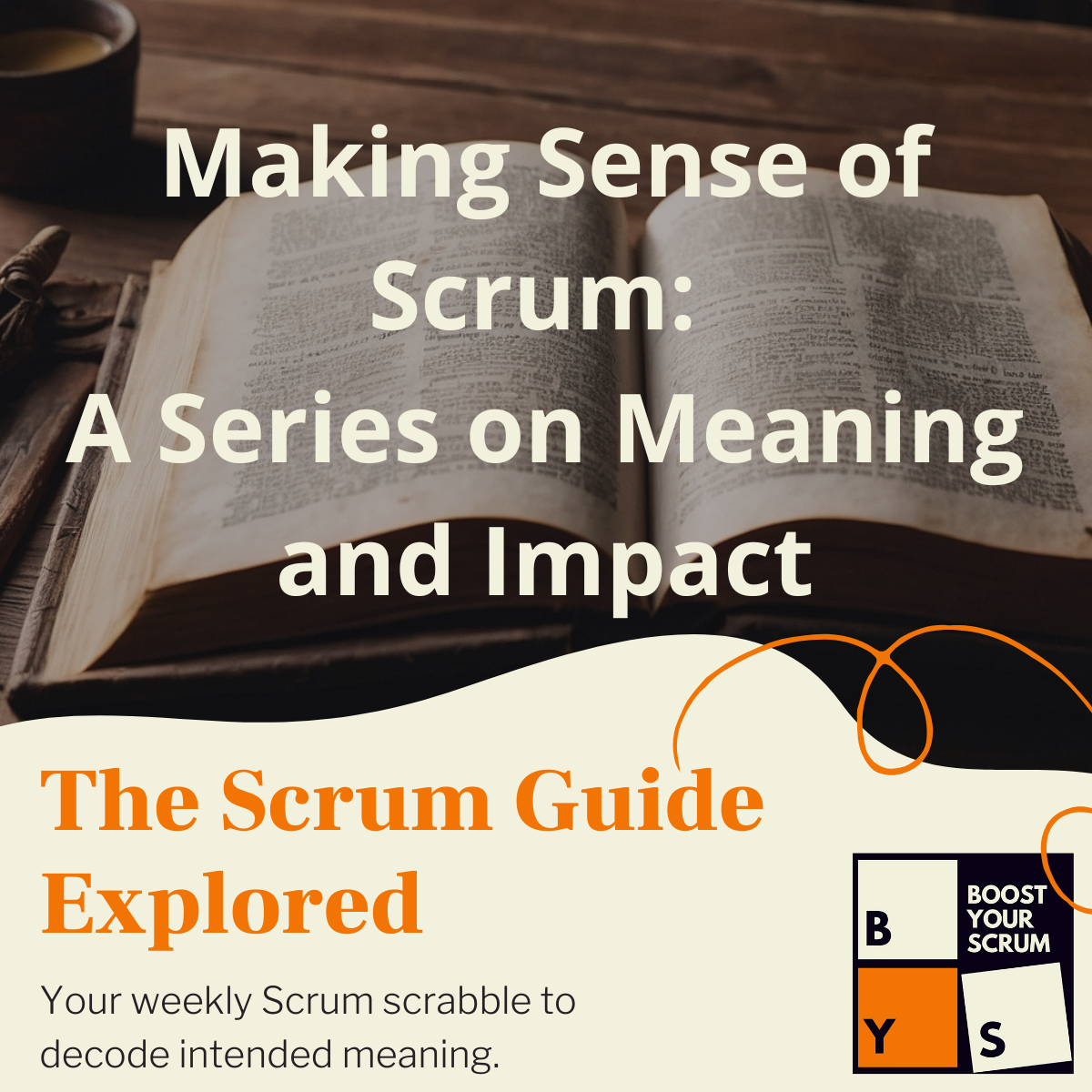What a journey it’s been so far…
48 posts in (see below), and we’ve only just completed the first two sections of the Scrum Guide: Purpose of the Scrum Guide and Scrum Definition. There’s so much more ahead—and so much richness already uncovered.
The Scrum Guide is often underestimated. Don’t.
Every word is deliberate.
Every sentence has weight.
Read it.
Re-read it.
Learn. Reflect. Repeat.
@Dave Smith shared three powerful questions with me to explore any sentence in the Guide with your team.
Use them often. Use them well:
- “What does this mean to you?”
- “What do you think this does NOT mean?”
- “What would happen if that had been omitted from the Scrum Guide?”
Next up: Scrum Theory—because there’s no practice without theory, and no theory worth much without practice.
Stay tuned, keep questioning, and if you’ve got a Scrum puzzle—send it my way. Always happy to help.
Don't want to miss any of these blog posts? Have the “The Scrum Guide Explored” series weekly in your mailbox.
Wishing you an inspiring read and a wonderful journey.
Scrum on!
Purpose of the Scrum Guide
- The Definition of Scrum
- Scrum's Essential Elements
- It's a Guide!
- Covering Up Problems...
- Breaking the Myth: Developers Aren’t Just Software Engineers
- How Is Scrum Simplifying or Adding Complexity to Your Life?
- Why Scrum Doesn’t Provide Specific Solutions—And Why That’s a Good Thing!
Scrum Definition
- What Does It Mean That Scrum Is a Framework? Is it Even Important...?
- Scrum: The Power of Doing Less
- Is Scrum Helping You? Discover How to Uncover Its Real Value
- Who Can Really Use Scrum? Hint: It’s Not Just Teams
- Defining Value in Scrum: What Does It Mean for You?
- Adaptive Solutions: The Heart of Scrum’s Power
- Scrum and Complex Problems: Why Planning Isn’t Enough
- The Scrum Master’s Role: Fostering Growth and Adaptation
- Fostering the Right Environment: The Scrum Master’s True Role
- Ordering Work in Scrum: it's about Clarity, Alignment and Collaboration
- Ordering vs. Prioritizing: What a Product Owner Really Does in Scrum
- The "Backlog" in Scrum: Beyond Features and Long Lists
- How Scrum Teams Select Work: Collaboration Toward Value
- Scrum Increments: Building Value, One Step at a Time
- Valuable Increments: Delivering What Truly Matters to Users
- Useful vs. Usable: What Makes an Increment Truly Valuable?
- Is Your Increment Truly Inspectable? Why it Matters More Than You Think...
- Scrum Adjustments: The Difference Between Learning and Stagnation.
- Are You Inspecting to Adapt or Just Showcasing?
- Stakeholders in Scrum: Who They Really Are (And Who You Might Be Missing)
- Why ‘Repeat’ is the Most Powerful Word in Scrum
- Scrum Is Simple… So Why Is It So Hard?
- Scrum Not Working? Try It As Is Before You Modify It
- Scrum Not Helping? Here’s How to Find Out Why.
- Scrum Still Not Working? Start with the Philosophy
- Scrum Feels Broken? Maybe You Missed the Theory...
- Scrum Not Delivering? Check the Structure. Minimal by Design, Powerful by Purpose.
- Scrum isn’t the Goal—Your Goals are
- Why the Scrum Guide is Purposefully Incomplete, and why that’s a good thing!
- Scrum Only Defines What’s Really Required. Aren’t You Adding Too Much?
- Scrum Isn’t Complete Without This One Ingredient: Collective Intelligence
- Scrum works—If you let people think (Collective Intelligence part II)
- Scrum’s Game Rules: Few, Clear, and Powerful
- To Guide, Not to Control: Scrum’s Take on the Hard Stuff
- The Secret to Better Scrum? Look at the Relationships
- Which techniques belong in your Scrum team? Here's the real answer.
- Scrum Wraps Around What You Already Do—But Not to Keep It Warm
- Rethinking legacy: when Scrum makes old practices obsolete
- Busy ≠ Effective: What Scrum should actually makes visible
- Scrum isn’t (just) for Delivering—it’s for Improving
To be continued...

